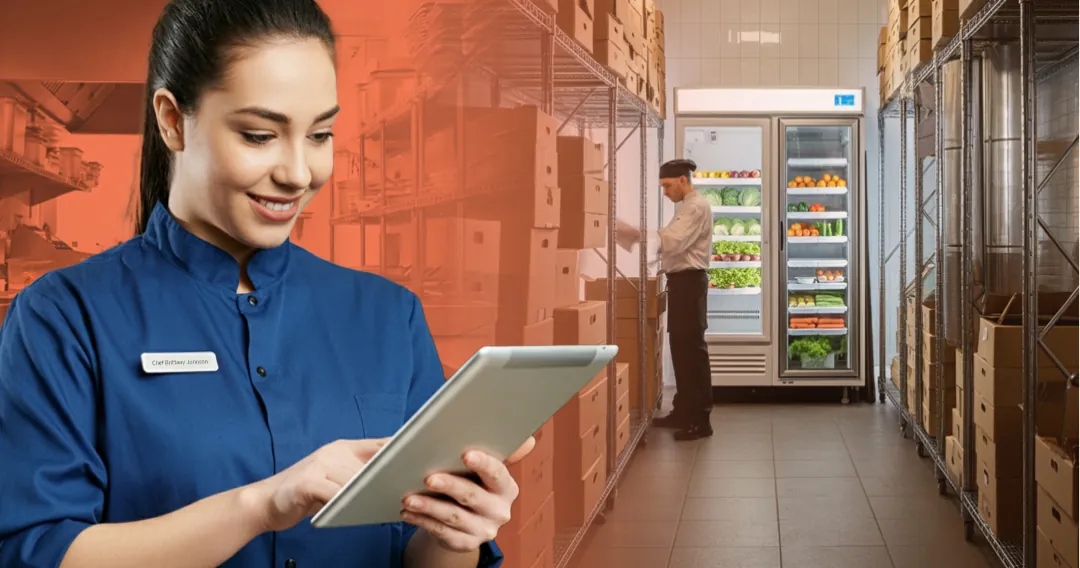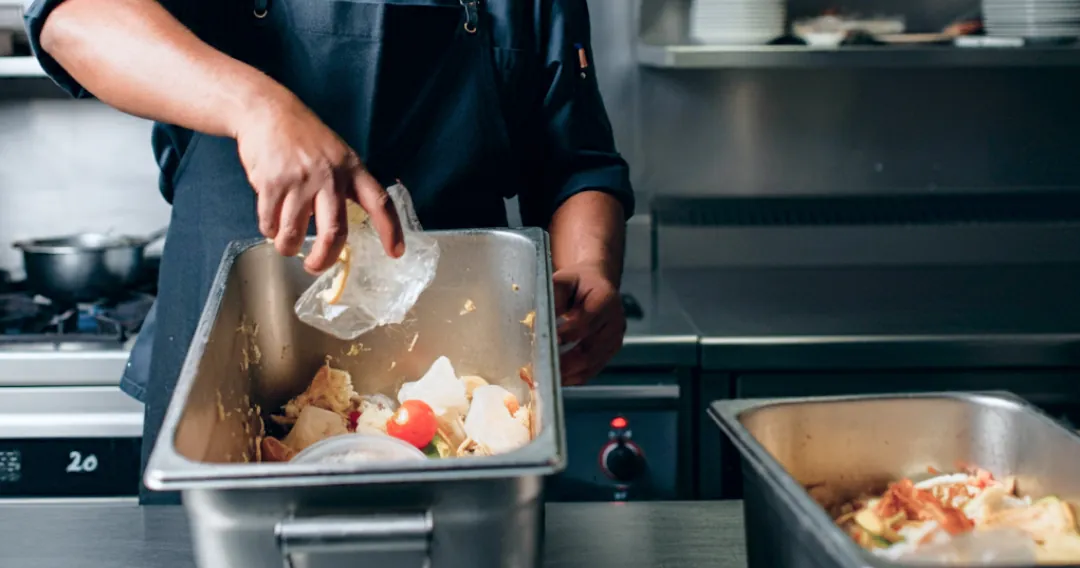Understand Restaurant-Specific Losses
Loss prevention is not just about stopping theft – it encompasses a wide range of strategies to reduce unnecessary costs, minimize waste, and optimize operations. For restaurant owners and managers, implementing effective loss prevention strategies can mean the difference between thriving and barely surviving in this competitive industry.
Consider these sobering statistics:
- Over 75% of inventory shrinkage in restaurants is due to theft
- Employee theft alone costs U.S. businesses up to $50 billion annually
- In an average restaurant, 10% of food is wasted before it makes it onto a plate. That’s an unrecoverable cost.
Given these numbers, it’s clear that a robust loss prevention strategy is not just beneficial, but essential for restaurant success. This guide will explore practical, proven methods to secure your profits and create a more efficient operation.

Restaurant Loss Prevention Tips
Inventory Management and Food Cost Control
If you implement digital inventory tracking systems, then you can keep a close eye on your stock levels. Not only does this reduce the risk of theft and waste, these systems also allow you to track ingredients from purchase to plate, giving you real-time insights into your inventory. Additionally, regularly monitoring sales figures can help identify discrepancies that may indicate theft or fraud.
Building on this foundation of digital tracking, portion control and standardized recipes are also essential for managing food costs. Make sure that each dish is prepared consistently, so you can prevent overuse of ingredients and maintain quality. This approach reduces waste and helps in accurate pricing and budgeting.
With your inventory well-managed and stored, the next step is to optimize your menu. Menu engineering is another effective strategy for minimizing waste. Analyze which dishes are popular and profitable, and adjust your menu to focus on items that sell well and use ingredients efficiently.
Cash Handling Procedures and POS Security
Secure cash handling procedures are essential for preventing losses in your restaurant. Implement strict protocols for handling cash, including regular counts, secure storage, and limited register access.
Your Point of Sale (POS) system is equally critical in loss prevention. Ensure it has robust security features like individual login credentials and transaction tracking. Regularly monitor POS reports to spot unusual patterns.
While managing cash and POS systems, don’t overlook credit card fraud. Train staff to be vigilant when processing payments and consider implementing EMV chip technology to reduce risks.
To tie all these efforts together, make daily reconciliation a habit. Reconcile cash drawers, credit card transactions, and inventory at day’s end to catch and address discrepancies promptly. This comprehensive approach to cash handling and POS security forms a strong defense against potential losses.
Employee Training and Management to Prevent Employee Theft
Employee training and management are crucial for effective loss prevention. Understanding the various ways employees steal, such as switching ingredients or misrepresenting inventory, is crucial for implementing effective prevention measures. Start by developing a culture of awareness through regular training sessions, helping staff understand their role in preventing losses.
Clear policies on employee meals and comps are equally important. While offering staff meals is common, guidelines prevent abuse and control costs. Extend this clarity to rules about offering complimentary items to customers.
Building on this foundation, make cash handling and inventory management training a key part of employee onboarding. Ensure all staff know the correct procedures for these critical tasks.
To reinforce these efforts, implement an anonymous reporting system for theft. This encourages employees to report suspicious activities without fear, helping you catch issues early and maintain a culture of honesty. By combining thorough training, clear policies, and open communication channels, you create a comprehensive approach to loss prevention that involves every team member.
Technology Solutions for Restaurant Loss Prevention
Video surveillance systems serve as both a deterrent against theft and a tool for monitoring operational efficiency. With remote viewing capabilities, you can oversee your restaurant from anywhere.
Building on this visual oversight, biometric time clock systems prevent time theft and ensure accurate payroll by using unique physical characteristics for employee clock-ins and clock-outs.
To complement these physical security measures, inventory management software automates tracking processes, reducing errors and providing real-time stock insights. This digital approach extends to data analytics tools, which analyze information from various sources to identify loss patterns.
Customer-Related Loss Prevention
Customer-related loss prevention is a critical aspect of restaurant management. To prevent dine-and-dash incidents, train staff to be vigilant and consider pre-payment policies for large groups or during busy times.
Effective management of customer complaints and comps is equally important. Establish clear guidelines for offering complimentary items or discounts, and ensure all staff are trained on these policies. This approach balances customer satisfaction with loss prevention.
Extending this focus to alcohol service, implement robust policies to prevent over-serving. Train staff on responsible alcohol service and use systems to track consumption, particularly for large groups. By addressing these customer-related aspects comprehensively, you create a safer, more profitable environment while maintaining a positive dining experience.
Vendor Management and Receiving Procedures
Effective vendor management is crucial for restaurant loss prevention. Start by implementing strict receiving protocols to prevent losses from short deliveries or subpar ingredients. Train staff to meticulously check deliveries against orders and invoices, and inspect the quality of all received goods.
To complement these on-site checks, conduct regular vendor background checks and audits. This helps prevent fraud and ensures you’re getting the best value. Regularly review relationships and compare prices to maintain competitive rates.
While building strong supplier relationships is important, maintain professional boundaries to avoid conflicts of interest. This balanced approach to vendor management – combining rigorous checks, regular audits, and professional relationships – creates a robust system that minimizes losses and maximizes value in your supply chain.
Operational Efficiency to Reduce Losses
Operational efficiency is key to reducing losses in restaurants. Start by optimizing labor scheduling using historical data and sales forecasts. This ensures adequate coverage during busy periods without overstaffing during slow times, significantly cutting unnecessary labor costs.
Beyond staffing, focus on reducing utility costs. Implement energy-efficient practices like LED lighting and efficient appliances, and train staff on conservation habits. These measures not only cut expenses but also promote environmental responsibility.
To further enhance efficiency, minimize breakage and equipment misuse. Train staff on proper handling and implement regular maintenance schedules. This approach prevents costly repairs and replacements, extending the life of your equipment. By addressing these operational aspects comprehensively, you create a lean, efficient restaurant that minimizes losses across multiple fronts.
Final Thoughts on Restaurant Loss Prevention
Restaurant loss prevention is an ongoing process that requires attention to detail and a willingness to adapt. Strive to strike a balance between vigilant oversight and maintaining a welcoming atmosphere for your customers and staff. With the right approach, loss prevention becomes an integral part of your restaurant’s culture, contributing to its long-term success and sustainability.
Explore ThinkLP’s Blog
Now that you know more about how to prevent loss, you can find additional insights on loss prevention and safety intelligence on ThinkLP’s blog. The blog features articles, case studies, and industry insights that provide practical tips and strategies for improving your loss prevention efforts.
Request a Demo
If you are interested in how ThinkLP’s software can support your loss prevention initiatives, we invite you to request a demo. Their Loss & Safety Intelligence Platform is designed to integrate with your existing operations, helping you reduce risks and improve efficiency. Reach out today to learn how ThinkLP can assist your organization in optimizing its loss prevention strategy.


